- Home
- V. S. Naipaul
Among the Believers Page 2
Among the Believers Read online
Page 2
Avicenna! To me only a name, someone from the European Middle Ages: it had never occurred to me that he was a Persian. In this dusty pavement medical stock was a reminder of the Arab glory of a thousand years before, when the Arab faith mingled with Persia, India, and the remnant of the classical world it had overrun, and Muslim civilization was the central civilization of the West.
Behzad was less awed than I was. He didn’t care for that Muslim past; and he didn’t believe in pavement medicines. He didn’t care for the Shah’s architecture, either: the antique Persian motifs of the Central Iranian Bank, and the Aryan, pre-Islamic past that it proclaimed. To Behzad that stress on the antiquity of Persia and the antiquity of the monarchy was only part of the Shah’s vainglory.
He looked at the bank, at the bronze and the marble, and said without passion, “That means nothing to me.”
Was his iconoclasm complete? Was he Persian or Iranian in anything except his love of the Iranian people? Had his political faith washed him clean?
It hadn’t. Tehran had had a revolution. But normal life went on in odd ways, and amid the slogans and posters with their emphasis on blood there were picture-sellers on the pavements. They offered blown-up colour photographs of Swiss lakes and German forests; they offered dream landscapes of rivers and trees. They also offered paintings of children and beautiful women. But the women were weeping, and the children were weeping. Big, gelatinous tears, lovingly rendered, ran half-way down the cheeks.
Behzad, whose father was a teacher of Persian literature, said, “Persian poetry is full of sadness.”
I said, “But tears for the sake of tears, Behzad—”
Firmly, like a man who wasn’t going to discuss the obvious, and wasn’t going to listen to any artistic nonsense, he said, “Those tears are beautiful.”
We left it at that. And from the topic of tears we turned once more, as we walked, to the revolution. There were two posters I had seen in many parts of the city. They were of the same size, done in the same style, and clearly made a pair. One showed a small peasant group working in a field, using a barrow or a plough—it wasn’t clear which, from the drawing. The other showed, in silhouette, a crowd raising rifles and machine guns as if in salute. They were like the posters of a people’s revolution: an awakened, victorious people, a new dignity of labour. But what was the Persian legend at the top?
Behzad translated: “ ‘Twelfth Imam, we are waiting for you.’ ”
“What does that mean?”
“It means they are waiting for the Twelfth Imam.”
The Twelfth Imam was the last of the Iranian line of succession to the Prophet. That line had ended over eleven hundred years ago. But the Twelfth Imam hadn’t died; he survived somewhere, waiting to return to earth. And his people were waiting for him; the Iranian revolution was an offering to him.
Behzad couldn’t help me more; he couldn’t help me understand that ecstasy. He could only lay out the facts. Behzad was without belief, but he was surrounded by belief and he could understand its emotional charge. For him it was enough to say—as he did say, without satirical intention—that the Twelfth Imam was the Twelfth Imam.
Later on my Islamic journey, as difficult facts of history and genealogy became more familiar, became more than facts, became readily comprehended articles of faith, I was to begin to understand a little of Muslim passion. But when Behzad translated the legend of those revolutionary posters for me I was at a loss.
It wasn’t of this hidden messiah that Iranians had written on the walls of London and other foreign cities before the revolution. They had written—in English—about democracy; about torture by the Shah’s secret police; about the “fascism” of the Shah. Down with fascist Shah: that was the slogan that recurred.
I hadn’t followed Iranian affairs closely; but it seemed to me, going only by the graffiti of Iranians abroad, that religion had come late to Iranian protest. It was only when the revolution had started that I understood that it had a religious leader, who had been in exile for many years. The Ayatollah Khomeini, I felt, had been revealed slowly. As the revolution developed, his sanctity and authority appeared to grow, and at the end were seen to have been absolute all along.
Fully disclosed, the Ayatollah had turned out to be nothing less than the interpreter, for Iranians, of God’s will. By his emergence he annulled, or made trivial, all previous protests about the “fascism” of the Shah. And he accepted his role. It was as the interpreter of God’s will that he addressed “the Christians of the world” in an advertisement in The New York Times on 12 January 1979, three weeks before he returned to Iran from his exile in France.
Half the message consisted of blessings and greetings from God. “The blessings and greetings of Almighty God to the Blessed Jesus … his glorious mother … Greetings to the clergy … the freedom-loving Christians.” Half was a request for Christian prayers on holy days, and a warning to “the leaders of some of the Christian countries who are supporting the tyrant shah with their Satanic power.”
And it was as the interpreter of God’s will, the final judge of what was Islamic and what was not Islamic, that Khomeini ruled Iran. Some days after I arrived in Tehran, this was what he said on the radio: “I must tell you that during the previous dictatorial regime strikes and sit-ins pleased God. But now, when the government is a Muslim and a national one, the enemy is busy plotting against us. And therefore staging strikes and sit-ins is religiously forbidden because they are against the principles of Islam.”
This was familiar to me, and intellectually manageable, even after a few days in Tehran: the special authority of the man who ruled both as political head and as voice of God. But the idea of the revolution as something more, as an offering to the Twelfth Imam, the man who had vanished in 873 A.D. and remained “in occultation,” was harder to seize. And the mimicry of the revolutionary motifs of the late twentieth century—the posters that appeared to celebrate peasants and urban guerrillas, the Che Guevara outfits of the Revolutionary Guards—made it more unsettling.
Behzad translated; the walls spoke; Tehran felt strange. And North Tehran—an expensive piece of Europe expensively set down in the sand and rock of the hills, the creation of the Shah and the large middle class that had been brought into being by the uncreated wealth of oil—felt like a fantasy. There were skyscrapers, international hotels, shops displaying expensive goods with international brand names; but this great city had been grafted onto South Tehran. South Tehran was the community out of which the North had too quickly evolved. And South Tehran, obedient to the will of God and the Twelfth Imam, had laid it low.
MUSLIMS were part of the small Indian community of Trinidad, which was the community into which I was born; and it could be said that I had known Muslims all my life. But I knew little of their religion. My own background was Hindu, and I grew up with the knowledge that Muslims, though ancestrally of India and therefore like ourselves in many ways, were different. I was never instructed in the religious details, and perhaps no one in my family really knew. The difference between Hindus and Muslims was more a matter of group feeling, and mysterious: the animosities our Hindu and Muslim grandfathers had brought from India had softened into a kind of folk wisdom about the unreliability and treachery of the other side.
I was without religious faith myself. I barely understood the rituals and ceremonies I grew up with. In Trinidad, with its many races, my Hinduism was really an attachment to my family and its ways, an attachment to my own difference; and I imagined that among Muslims and others there were similar attachments and privacies.
What I knew about Islam was what was known to everyone on the outside. They had a Prophet and a Book; they believed in one God and disliked images; they had an idea of heaven and hell—always a difficult idea for me. They had their own martyrs. Once a year mimic mausolea were wheeled through the streets; men “danced” with heavy crescent moons, swinging the moons now one way, now the other; drums beat, and sometimes there were ritual stick fights.
The stick fights were a mimicry of an old battle, but the procession was one of mourning, commemorating defeat in that battle. Where had that battle taken place? What was the cause? As a child, I never asked; and it was only later that I got to know that the occasion—in which Hindus as well as Muslims took part—was essentially a Shia occasion, that the battle had to do with the succession to the Prophet, that it had been fought in Iraq, and that the man being especially mourned was the Prophet’s grandson.
Islam, going by what I saw of it from the outside, was less metaphysical and more direct than Hinduism. In this religion of fear and reward, oddly compounded with war and worldly grief, there was much that reminded me of Christianity—more visible and “official” in Trinidad; and it was possible for me to feel that I knew about it. The doctrine, or what I thought was its doctrine, didn’t attract me. It didn’t seem worth inquiring into; and over the years, in spite of travel, I had added little to the knowledge gathered in my Trinidad childhood. The glories of this religion were in the remote past; it had generated nothing like a Renaissance. Muslim countries, where not colonized, were despotisms; and nearly all, before oil, were poor.
The idea of travelling to certain Muslim countries had come to me the previous winter, during the Iranian revolution. I was in Connecticut, and on some evenings I watched the television news. As interesting to me as the events in Iran were the Iranians in the United States who were interviewed on some of the programmes.
There was a man in a tweed jacket who spoke the pure language of Marxism, but was more complicated than his language suggested. He was a bit of a dandy, and proud of his ability to handle the jargon he had picked up; he was like a man displaying an idiomatic command of a foreign language. He was proud of his Iranian revolution—it gave him glamour. But at the same time he understood that the religious side of the revolution would appear less than glamorous to his audience; and he was trying—with the help of his tweed jacket, his idiomatic language, his manner—to present himself as sophisticated as any man who watched, and sophisticated in the same way.
Another evening, on another programme, an Iranian woman came on with her head covered to tell us that Islam protected women and gave them dignity. Fourteen hundred years ago in Arabia, she said, girl children were buried alive; it was Islam that put a stop to that. Well, we didn’t all live in Arabia (not even the woman with the covered head); and many things had happened since the seventh century. Did women—especially someone as fierce as the woman addressing us—still need the special protection that Islam gave them? Did they need the veil? Did they need to be banned from public life and from appearing on television?
These were the questions that occurred to me. But the interviewer, who asked people prepared questions every day, didn’t dally. He passed on to his next question, which was about the kind of Islamic state that the woman wanted to see in Iran. Was it something like Saudi Arabia she had in mind? Fierce enough already, she flared up at that; and with her chador-encircled face she looked like an angry nun, full of reprimand. It was a mistake many people made, she said; but Saudi Arabia was not an Islamic state. And it seemed as if she was saying that Saudi Arabia was an acknowledged barbarism, and that the Islamic state of Iran was going to be quite different.
It was of the beauty of Islamic law that I heard a third Iranian speak. But what was he doing, studying law in an American university? What had attracted these Iranians to the United States and the civilization it represented? Couldn’t they say? The attraction existed; it was more than a need for education and skills. But the attraction wasn’t admitted; and in that attraction, too humiliating for an old and proud people to admit, there lay disturbance—expressed in dandyism, mimicry, boasting, and rejection.
An American or non-Islamic education had given the woman with the chador her competence and authority. Now she appeared to be questioning the value of the kind of person she had become; she was denying some of her own gifts. All these Iranians on American television were conscious of their American audience, and they gave the impression of saying less than they meant. Perhaps they had no means of saying all that they felt; perhaps there were certain things they preferred not to say. (It was only in Iran that I understood the point the woman with the chador had made about Saudi Arabia. It was a sectarian point and might have been thought too involved for a television audience: the Arabians and the Persians belong to different sects, have different lines of succession to the Prophet, and there is historical bad blood between them.)
From an accomplished Iranian novel, which I read at about this time, I learned more. People can hide behind direct statements; fiction, by its seeming indirections, can make hidden impulses clear. The novel, Foreigner, described by its American publisher as the first novel in English by an Iranian, was by a young woman, Nahid Rachlin. It was published in 1978, while the Shah still ruled. It avoids political comment. Its protest is more oblique; the political constriction drives the passion deeper, and the novel, with all its air of innocence, is a novel of violation, helplessness, and defeat.
The narrator is Feri, an Iranian woman of thirty-two living in Boston. She has studied in the United States, is married to an American university teacher, and works as a biologist in a research institute. Feri, on an impulse, goes back to Tehran for a two-week holiday. The city she goes back to is full of cars and “Western” buildings (“Western,” rather than “new” or “modern,” is the narrator’s curious word); but it is not a city of glamour. The streets can be thuggish; and family life in the hidden courtyards of old houses is cramped and squalid, with memories for Feri of incestuous advances, women’s talk of menstruation and rape, and memories of women listening to a monthly sermon by a Muslim priest and wailing as they once again heard of the tragedies of the Shia heroes of Iran.
For Feri the life of her own family house is incomplete. Her mother is living with another man in another town; her father has married again. Feri decides to cut short her holiday and go back to Boston. To do that she needs an Iranian exit visa, and to get that she needs the permission of her husband. It begins to seem that she has trapped herself and that she will never return to the clarity and light of suburban Boston.
She goes looking for her mother, and in a broken-down country town she finds a sad, broken-down mother. The mother needs help; but Feri, the biologist from Boston, needs love more. Finding her mother, she becomes like a child again; she falls ill. She is taken to the local hospital. She is nervous about its standards, but the doctor in charge reassures her. The equipment is modern, he says, and he himself was trained in the United States. He could have stayed there but—for reasons he cannot give, except that Iranians who go to the United States become unsettled—he preferred to come back; and then for a month, he says, he soothed himself by visiting mosques and shrines.
Feri is half seduced by the doctor’s understanding, and in the hospital she reflects on her time in the United States. She has always been a stranger, solitary in spite of husband and friends, always at a loss sexually and socially; she cannot say why she has done anything, why she has lived the American life. She has worked hard, but now even that work—of experiment and research—seems pointless, work for the sake of work, work for the sake of fitting in. Her time in the United States, in spite of study, work, and husband, has been a time of emptiness. And then the doctor tells Feri that the pain in her stomach comes from an old ulcer. “You brought it with you,” the doctor says. “Now you have no right to be afraid of the hospital, me, or your country. What you have is a Western disease.”
Feri’s American husband, previously summoned, arrives to take her back. He is seen as a stranger, but fairly (and this fairness is part of the novel’s virtue): a man of work and the intellect, private rather than solitary, self-sufficient, a man made by another civilization, his marriage to an Iranian his single unconventional act. It is impossible for Feri to go back with someone so remote to the American emptiness. She will lose her research job. But she doesn’t mind.
She will, in fact, lay down that anxious, all-external life of work and the intellect. She will do as the doctor did; she will visit mosques and shrines, and to do that she will put on the chador. She feels she has never really been happy. Tranquillity comes to her with her renunciation (and oddly—a good stroke of the novelist’s—ideas for research that she will now never carry out).
And—though the novelist doesn’t make the point—it is as if Feri and the doctor, turning away from the life of intellect and endeavour, have come together in an Iranian death pact. In the emotions of their Shia religion, so particular to them, they will rediscover their self-esteem and wholeness, and be inviolate. They will no longer simply have to follow after others, not knowing where the rails are taking them. They will no longer have to be last, or even second. And life will go on. Other people in spiritually barren lands will continue to produce the equipment the doctor is proud of possessing and the medical journals he is proud of reading.
That expectation—of others continuing to create, of the alien, necessary civilization going on—is implicit in the act of renunciation, and is its great flaw.
2
The Rule of Ali
In August 1979, more than six months after the overthrow of the Shah, the news from Iran was still of executions. The official Iranian news agency kept count, and regularly gave a new grand total. The most recent executions had been of prostitutes and brothel managers: the Islamic revolution had taken that wicked turn. The Ayatollah Khomeini was reported to have outlawed music. And Islamic rules about women were being enforced again. Mixed bathing had been banned; Revolutionary Guards watched the beaches at the Caspian Sea resorts and separated the sexes.

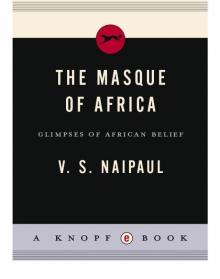 The Masque of Africa: Glimpses of African Belief
The Masque of Africa: Glimpses of African Belief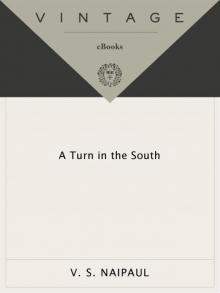 A Turn in the South
A Turn in the South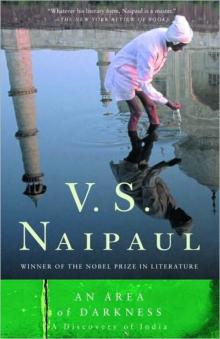 An Area of Darkness
An Area of Darkness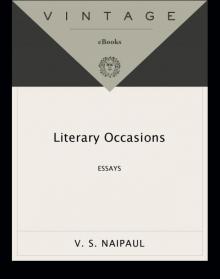 Literary Occasions: Essays
Literary Occasions: Essays A Way in the World
A Way in the World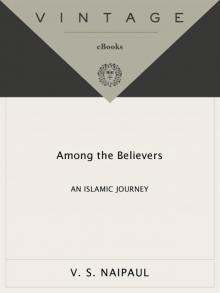 Among the Believers: An Islamic Journey
Among the Believers: An Islamic Journey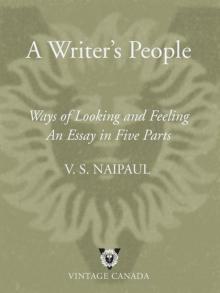 A Writer's People: Ways of Looking and Feeling
A Writer's People: Ways of Looking and Feeling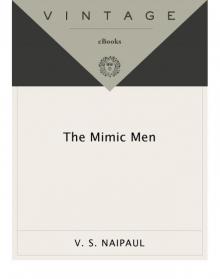 The Mimic Men: A Novel
The Mimic Men: A Novel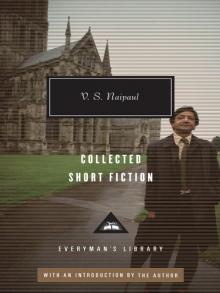 Collected Short Fiction
Collected Short Fiction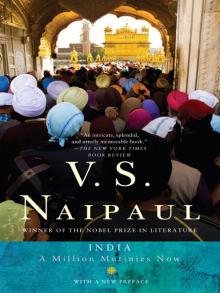 India: A Million Mutinies Now
India: A Million Mutinies Now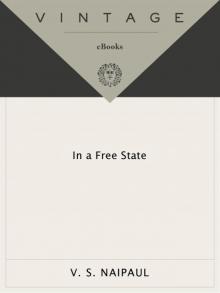 In a Free State
In a Free State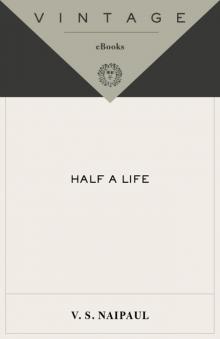 Half a Life
Half a Life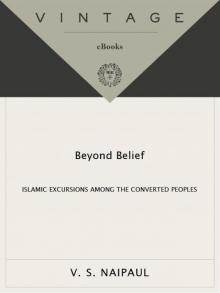 Beyond Belief: Islamic Excursions Among the Converted Peoples
Beyond Belief: Islamic Excursions Among the Converted Peoples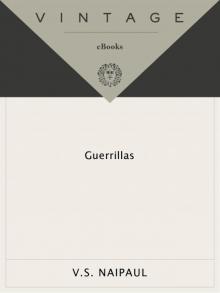 Guerrillas
Guerrillas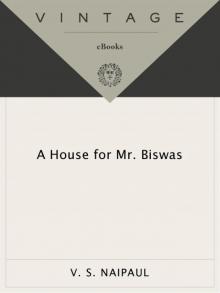 A House for Mr. Biswas
A House for Mr. Biswas The Writer and the World: Essays
The Writer and the World: Essays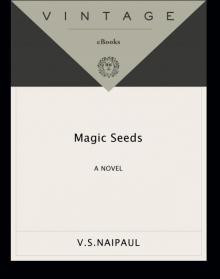 Magic Seeds
Magic Seeds The Mystic Masseur
The Mystic Masseur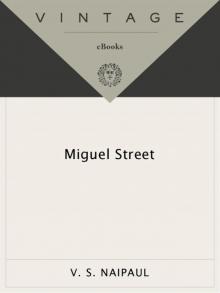 Miguel Street
Miguel Street The Return of Eva Perón, With the Killings in Trinidad
The Return of Eva Perón, With the Killings in Trinidad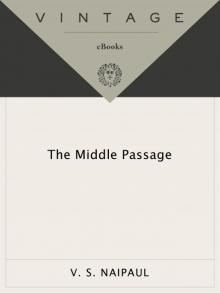 The Middle Passage
The Middle Passage A Bend in the River
A Bend in the River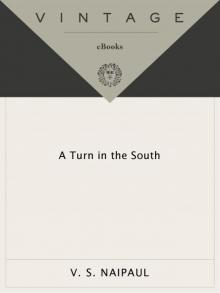 A Turn in the South (Vintage International)
A Turn in the South (Vintage International)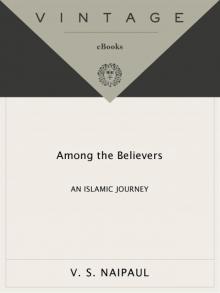 Among the Believers
Among the Believers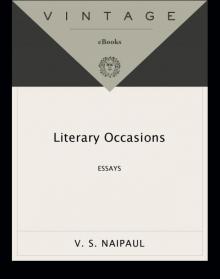 Literary Occasions
Literary Occasions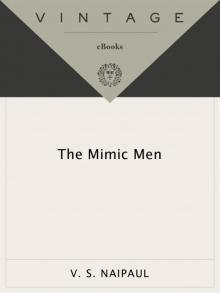 The Mimic Men
The Mimic Men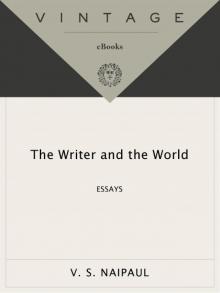 The Writer and the World
The Writer and the World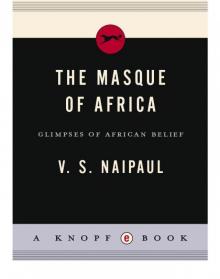 The Masque of Africa
The Masque of Africa